Living with arthritis or chronic joint pain can be exhausting, physically, emotionally, and mentally. Whether it’s the stiffness that greets you in the morning, the inflammation that limits your movement, or the fatigue that follows daily tasks, the impact is real and often debilitating. At Purusha Ayurveda, we offer a time-tested solution rooted in ancient wisdom: Panchakarma, Ayurveda’s most profound system of detoxification and rejuvenation.
In this comprehensive article, we’ll explore how Panchakarma therapy supports arthritis, joint pain, and mobility challenges, how the treatment works, and why it continues to offer hope for those seeking a holistic, long-lasting path to healing.
Understanding Arthritis Through the Lens of Ayurveda
In Ayurveda, arthritis is not a single disease but a symptom of imbalanced doshas, often involving an excess of Vata dosha (the air and ether elements) in the joints. This excess Vata can dry out the synovial fluid, cause cracking or popping in the joints, and lead to inflammation, stiffness, and pain.
In conditions like osteoarthritis, rheumatoid arthritis, or even gout, there may also be an accumulation of ama (toxic waste buildup from poor digestion and metabolism), which settles into weakened tissues—most often the joints—leading to swelling, reduced mobility, and degeneration over time.
Panchakarma directly addresses these root causes—not just the symptoms, by removing toxins, pacifying the doshas, restoring digestive fire (Agni), and rejuvenating joint tissues.
What Is Panchakarma?
Panchakarma is a traditional Ayurvedic cleansing and healing process designed to detoxify the body, balance the doshas, and rejuvenate the tissues. It consists of five therapeutic procedures (hence the name Pancha, meaning five, and Karma, meaning action) that eliminate deeply embedded toxins from the body's physical and energetic systems.
For arthritis and mobility concerns, Panchakarma offers far more than temporary relief—it aims to slow degeneration, improve flexibility, and restore long-term vitality.
How Panchakarma Supports Arthritis and Joint Health
Here’s how Panchakarma specifically supports those struggling with arthritis and joint-related issues:
1. Reduces Inflammation
Therapies such as Abhyanga (warm herbal oil massage) and Pinda Swedana (herbal bolus fomentation) penetrate deep into the tissues, soothing inflammation, nourishing joints, and calming aggravated Vata.
2. Removes Toxins and Ama
Cleansing treatments like Basti (medicated enemas) and Virechana (purgation) remove toxic buildup from the digestive tract and tissues. Since ama is often the underlying cause of joint swelling and stiffness, its removal is essential to regaining ease and movement.
3. Improves Circulation and Mobility
Panchakarma therapies help restore proper prana (life force) flow and blood circulation to joints, muscles, and connective tissues. This promotes natural lubrication and reduces pain caused by stiffness or degeneration.
4. Strengthens Digestion and Metabolism
A key part of any Panchakarma program is resetting the digestive fire (Agni). Stronger digestion means less ama formation and improved assimilation of nutrients vital to rebuilding bone and cartilage health.
5. Rejuvenates and Restores Joint Tissues
The Rasayana phase (post-detox rejuvenation) helps nourish depleted tissues using Ayurvedic herbs, medicated ghee, rasayanas like Ashwagandha, Guggulu, and Chyawanprash, and deeply nourishing food. These support bone density, muscle strength, and immune function.
Common Conditions Supported by Panchakarma
Osteoarthritis
Rheumatoid Arthritis (Amavata)
Gout (Vatarakta)
Joint stiffness
Neck, back, and knee pain
Sciatica
Post-injury recovery with joint involvement
What to Expect at Purusha Ayurveda
At Purusha Ayurveda, your Panchakarma journey begins with a comprehensive Ayurvedic consultation. Our experienced Ayurvedic Doctor will assess your constitution (Prakruti), current imbalances (Vikruti), joint health history, and lifestyle to design a personalized Panchakarma protocol.
Each day of your retreat includes:
Customized body techniques (e.g., Abhyanga, Swedana, Pinda Sweda, Basti)
Herbal support and detox formulations
Organic, anti-inflammatory meals
Gentle therapeutic yoga and breathwork
Daily rituals for pain relief, grounding, and deep rest
Daily check-in with your practitioner
We also include targeted herbal oils and ghee preparations formulated specifically for joint repair and Vata balance.
Why a 7–21 Day Commitment Is Essential
Unlike quick-fix cleanses, true Panchakarma requires time. Each of its three phases, Preparation (Purvakarma), Elimination (Panchakarma), and Rejuvenation (Rasayana), builds upon the last. For arthritis and joint issues, we recommend a minimum of 7 days, with 14 to 21 days offering the deepest and most lasting benefits.
This extended process allows the body to gently open, release toxins, and repair tissue without force or trauma. It also gives the nervous system time to relax, a vital component in long-term pain reduction.
Client Success Stories
Many of our guests with arthritis and mobility issues report:
Reduced joint pain and stiffness
Improved flexibility and range of motion
Decreased reliance on medications
Better sleep and energy
Emotional clarity and renewed confidence in their body
These outcomes aren’t temporary—they’re part of a sustainable path to wellness rooted in your body’s natural intelligence and capacity to heal.
Encouragement to Begin Your Journey
If you’ve tried everything—from medications to physical therapy to alternative supplements—and are still struggling with joint pain or arthritis, Panchakarma may be the missing piece.
At Purusha Ayurveda, you’ll receive holistic support, expert care, and personalized healing in a serene environment designed for transformation. We believe healing is not only possible—it’s your birthright.
Take the first step toward greater mobility, less pain, and renewed vitality. Let Ayurveda guide you back to the strength and comfort that already exists within.
Ready to experience Panchakarma for joint pain and arthritis? Request a Reservation, or visit our Panchakarma Retreat page to learn more about upcoming openings.
Visit our Panchakarma FAQ’s.
Disclaimer: The sole purpose of these articles is to provide information about the tradition of Ayurveda. This information is not intended for use in the diagnosis, treatment, cure or prevention of any disease.





















